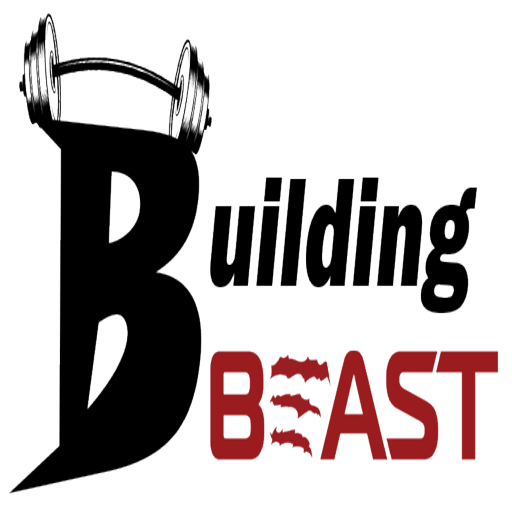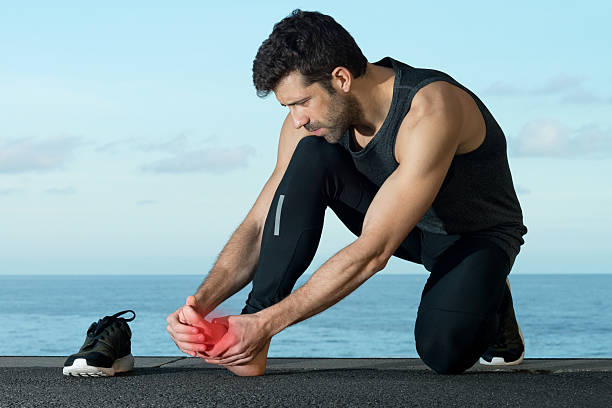INTRODUCTION
Our feet bear the entire weight of our bodies all day long. The textbooks of physiology acknowledge the intricate design of our feet that makes it worthy of all the functions it performs. The anatomy of the foot is not only comprised of mere bones and muscles but also includes tendons and ligaments.
Without them, the functioning of those wonderful feet will be reduced to half. Sometimes we experience excruciating, throbbing pain on top of our feet that makes us unable to walk or even stand comfortably.
The causes of such pain can differ in different individuals. Though most of the time, it is because of sheer negligence on our part. We are simply not bothered to keep those feet healthy. Unravel the various secrets of bones and muscles of the foot and how to be attentive towards their well-being. Happy feet-ing!
BARE ANATOMY OF FOOT
The foot is a complex design of bones, muscles, tendons, ligaments. To start with, we already know what bones and muscles are there for. We often come across the terms’ tendons’ and ‘ligaments,’ but we never dig out the meaning of it. Tendons and ligaments are both made of fibrous tissues but are known to serve distinct functions.
The ligaments could be considered as rope-like structures that join bone to bone. Tendons, on the other hand, connect the muscles with the bones. Let us take a glimpse of foot anatomy by dividing the structure of feet into three different regions:
- The forefoot: As the name implies, forefoot means the toe fingers. The five toes of the forefoot are made up of phalanges, and the five longer bones are called metatarsals.
- The midfoot: The midfoot is a pyramid-like structure. It forms the arches of the feet. Cuneiform bones, cuboid bones, and navicular bones form the midfoot pyramid.
- The hindfoot: The heel and ankle constitute the hindfoot. The two longer leg bones, the tibia, and fibula are supported by the talus bone.
Now it is easier for us to know what fishy business happens when we get a striking pain on the top of the foot. The forefoot and the midfoot are most likely to be causing the drama.
HOW MANY PEOPLE SUFFER FROM FOOT PAIN?
If you are a member of an Indian family, you will know that almost everyone above the age of 40 complains about leg and foot pain. Undoubtedly, the kind of lifestyle the middle-class Indians live is a precursor of such bodily pains. We are going to look into the causes of pain on the top of the foot shortly. Let us first look into some world statistics.
According to the Journal of Foot and Ankle Research, approximately one-quarter of the world population is the victim of foot pain. Almost half of the time, the paint on the top of the feet is disabling. These pains have an immense effect on the mental and psychological aspects of one’s life. It diminishes the overall quality of one’s life.
The statistics provided by the Journal of Foot and Ankle Research are:
- Near about 17-42% of the adult population of the World suffers from foot pain
- 50% of these 17-42% affected population experience disabling effects of foot pain
- Almost 90% of the affected population do not seek medical advice during the initial period of experiencing pain
A MEDICAL OUTLOOK ON FOOT PAIN
The feet are a constant carrier of all our bodily weight. Thus, it is quite right if you assume that the feet would be most easily affected. Proper care and precautions must be taken to safeguard your feet from any uncalled disaster. To start with our understanding of how to identify and care for an injured foot, let us see what the physiologist and sports scientists think about the class of foot pain.
Physiologists are not yet sure about how to concisely define the infinite aspects of foot pain. Well, most of them agreed to describe foot pain to be an unpleasant sensory and emotional experience. In most types of feet, pain damage is observed in tissues distal to the tibia or fibula. Without going into any more technicalities, jumpstart the diagnostic features and causes of pain on the top of the foot. Learn about medical classifications of foot pain by clicking here.
THE CAUSES OF PAIN
Athletes and dancers most commonly face the condition of pain over the top of their feet. From this, it can be inferred that foot pain is regular guests of anyone who are actively engaged with activities such as walking, running, or any other vigorous foot activities. The varieties of foot pain that are caused due to strenuous activities of the feet are:
- Extensor tendonitis: As evident from the name, this condition is caused due to conditions in the tendons of the feet. The tendons that run along the top of the foot are most likely to be affected. Extensor tendonitis is caused due to tight-fitting shoes. Ladies! Do not wear those tight stilettoes every day. You are risking your foot life.
- Sinus tarsi: Sounds uncommon! Yes, it is quite rare to be seen. Sinus tarsi are the name of the channel that runs between the bone of the heel and the heel of the ankle. In this condition, an inflammation in the sinus tarsi is seen. Apart from the top of the foot, you will also experience shrill pain outside the ankle.
- The common fractures: Hairline fractures are the common gifts to the footballers and kickboxers of the planet. Pain on the top of the feet can be a sign of fracture in the metatarsal bones. Swelling and experience of pain even on slight movement are common symptoms of a metatarsal fracture.
Sometimes, pain can simply be a pain. Let it be at any part of the body. Just like a minor headache does not mean a brain tumour, foot pain can simply be a consequence of a stressful day. DO NOT PANIC. You do not have a fractured foot if you cannot remember where did you hurt your feet. Trust me! You would remember the date and time if your metatarsals were skewed.
SOME OTHER CAUSES OF PAIN ON THE TOP OF THE FOOT
Apart from the serious conditions of foot pain that would require immediate medical attention, there are few more varieties of foot pain:
- Gout: This condition is normally seen in people whose diet is devoid of calcium in any form. Intense pain is experienced in gout, which originates from the joint at the base of the big toe.
- Bone spurs: Growth of bone tissues are seen in bone spurs. The tissues generally grow along the joints causing a painful sensation. The causes of such abnormal spurs are mostly genetic. Surgical removal of such growths is found to be the most relevant treatment.
- Peripheral neuropathy: This particular condition affects the nervous system of your body. An excruciating pain originating at the top of your feet spreads to the legs and gradually affects the hip joint.
- Nerve issues: Sometimes, along with the ligaments and tendons, the nerve supplies of the feet are also affected due to an injury. Common peroneal nerve dysfunction is widely recorded. The sciatic nerve of the foot is damaged in peroneal nerve dysfunction and causes tingling sensation along with pain at the top of the feet. In the later stages of the condition, weakness is spread to the lower limbs and foot tip.
Out of all other forms of foot pain, the ones that are caused due to impairment in nerves and involve the nervous system are a notch more dangerous. Problems related to the nervous system have disabling effects on the body. Learn details from the experts here.
It is not always possible to understand the intricate matters of foot pains and their causes. Start taking care of those feet to keep dancing.
DIAGNOSING THE FOOT PAIN
The homely remedies for treating the painting foot are helpful for minor injuries and distortions. But if you do not feel the pain to be subsiding even after repeated application of home remedies, pick your phone ASAP. Fix an appointment with your doctor. Do not delay consulting your doctor if you feel severe pain while walking or facing difficulty in doing any everyday task. The doctor may ask you to run the following tests:
- Blood test: It is the easiest way to know about gout and diabetes conditions.
- The MRI: It will do a full-body scan of any kind of nerve-related problems
- X-rays: These are obvious tests that would help observe your bone structures
- Other kinds of body scans: This will be the easiest way to know about any kind of fractures or bone deformity in the body.
TREATMENT FOR FOOT PAIN
A minor injury to your feet may take a gigantic figure if not treated properly. Some of the most commonly opted treatments for pain on top of the foot are:
- Physical therapy or physiotherapy: It helps to stimulate the muscles and ligaments of the affected area, helping them to relax.
- Casting: For serious or minor fractures, casts are often suggested by doctors. Walking boots are another alternative to that.
- Anti-inflammatory drugs: These are commonly prescribed by physiotherapists for reducing the swelling and tenderness of the affected foot.
WHAT ARE THE PREVENTIONS YOU CAN TAKE?
Practising good foot care will bring unexpected results to your daily life. You keep the following in check:
- Right pair of shoes: We are not talking about your party wears here. Wear as much fancy as you want, but be careful of your regular wear. It is recommended by physiologists to go for easy-fitting pairs. Know your foot size, and DO NOT try to fit into a smaller size. Footwear should provide support and not be a reason for a sprain in your ankles.
- Keep a record of your diabetes and arthritis: These two medical conditions frequently cause feet problems. Apart from foot pain, diabetes will also cause cracks and fluid discharge from the skin surface. Arthritis causes joint pains. Mild exercises and physiotherapies are advised by medical professionals.
- Rest your feet: If you are engaged with the fitness world or have high athletic activities daily, fix your off days now. Resting your feet once in a while helps your feet muscles to relax. The sprint will be extraordinary the next day. And also, your body will get time to replenish from all the stress.
- Warm-ups before exercise: Starting with the exercise routine without prepping and warming up our body is a big NO. Try stretching your feet and calves before jumpstarting your exercise regime. This will prevent your body from having sudden sprains. The workout session is going to be much smoother.
- Going for highly intensive training: Do not challenge your body to go for the high-intensity regime without proper consultation. High-intensity training involves the crucial muscles of the body and may leave your feet injured with all the strains. Take care of your ligaments now.
- Overdoing: We know you have to achieve that body goal ASAP. But not at the cost of your feet, right? Go easy on them. Do not overdo the reps at a time. It will only have a strenuous effect on the muscles of your feet. Go easy and keep patience.
CONCLUSION
Let’s start paying attention to the feet. They hold our body upright for the whole day, and all we do is fitting a tight shoe in it. Tendons and ligaments play crucial roles in the movement of our feet. Ligaments are most commonly injured during sports like cricket, football, and kickboxing. Dancers often face problems like dislocation of bones in feet and toes. The treatment for such conditions may be a little painful.
Pain at the top of our feet could be avoided if we adopt some basic foot care strategies. Wearing shoes of the right size would be a good start. Mild exercises and workout routines are also rewarding for foot health. Keep the feet happy!







